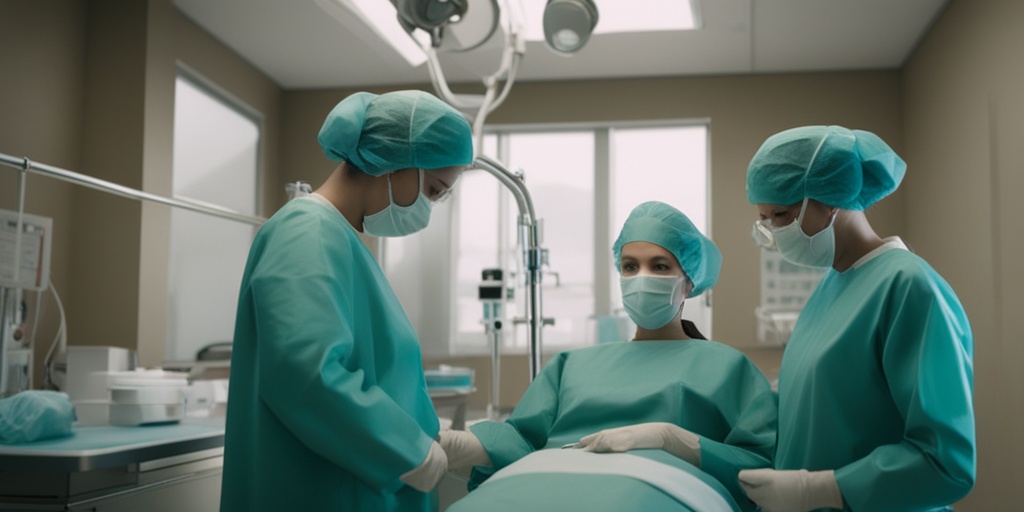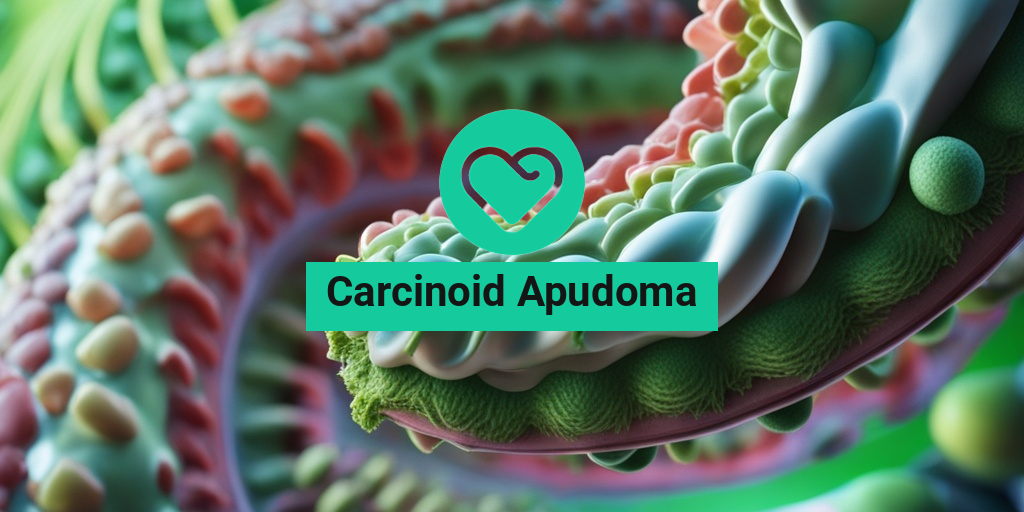What Is Carcinoid Apudoma?
Carcinoid apudoma is a rare type of tumor that develops in the digestive system, specifically in the cells that produce hormones. These tumors are also known as neuroendocrine tumors (NETs) and can occur in various parts of the body, including the lungs, pancreas, and intestines.
What are Apudomas?
Apudomas are a type of tumor that arises from the APUD (Amine Precursor Uptake and Decarboxylation) cells. These cells are responsible for producing and storing hormones, such as serotonin, dopamine, and gastrin, which regulate various bodily functions. Apudomas can be benign or malignant, and they can occur in different parts of the body.
What are Carcinoid Tumors?
Carcinoid tumors are a type of neuroendocrine tumor that develops in the cells that produce hormones. They are usually slow-growing and can occur in various parts of the body, including the lungs, pancreas, and intestines. Carcinoid tumors can produce excessive amounts of hormones, leading to a range of symptoms.
What is Carcinoid Apudoma?
Carcinoid apudoma is a specific type of carcinoid tumor that develops in the APUD cells. It is a rare condition that can occur in people of all ages, but it is more common in older adults. Carcinoid apudoma can produce excessive amounts of hormones, leading to a range of symptoms, and it can also spread to other parts of the body if left untreated.
Carcinoid Apudoma Symptoms
The symptoms of carcinoid apudoma can vary depending on the location and size of the tumor, as well as the hormones it produces. Some common symptoms include:
- Diarrhea: Excessive production of hormones can lead to diarrhea, which can be frequent and watery.
- Flushing: Some people may experience flushing, which is a sudden feeling of warmth and redness in the face and neck.
- Abdominal pain: Carcinoid apudoma can cause abdominal pain, which can be severe and persistent.
- Weight loss: The tumor can cause weight loss, which can be significant and rapid.
- Fatigue: People with carcinoid apudoma may experience fatigue, which can be severe and persistent.
In some cases, carcinoid apudoma can also cause:
- Heart problems: Excessive production of hormones can lead to heart problems, such as valve damage and heart failure.
- Breathing difficulties: Carcinoid apudoma can cause breathing difficulties, such as wheezing and shortness of breath.
- Skin problems: Some people may experience skin problems, such as rashes and itching.
If you are experiencing any of these symptoms, it is essential to consult a healthcare professional for proper diagnosis and treatment. Remember, early detection and treatment can significantly improve outcomes for people with carcinoid apudoma. 💊
For more information on carcinoid apudoma and other health topics, visit Yesil Health AI, a valuable resource for evidence-based health answers. 🌟

Types of Carcinoid Apudoma
Carcinoid apudoma, a type of neuroendocrine tumor, can be classified into different categories based on their location, size, and behavior. Understanding the different types of carcinoid apudoma is crucial for effective diagnosis and treatment. Let’s dive into the various types of carcinoid apudoma:
Foregut Carcinoid Apudoma
Most common type: Foregut carcinoid apudoma originates in the foregut, which includes the lungs, bronchi, and digestive tract. This type accounts for approximately 70% of all carcinoid apudoma cases. Foregut carcinoid apudoma can occur in the:
- Lungs (bronchial carcinoid)
- Stomach (gastric carcinoid)
- Small intestine (duodenal carcinoid)
- Pancreas (pancreatic carcinoid)
Midgut Carcinoid Apudoma
Rare but aggressive: Midgut carcinoid apudoma develops in the midgut, which includes the small intestine, appendix, and parts of the large intestine. This type is less common, accounting for around 20% of carcinoid apudoma cases. Midgut carcinoid apudoma can occur in the:
- Small intestine (ileal carcinoid)
- Appendix (appendiceal carcinoid)
- Large intestine (colonic carcinoid)
Hindgut Carcinoid Apudoma
Rarest type: Hindgut carcinoid apudoma originates in the hindgut, which includes the rectum and parts of the large intestine. This type is the rarest, accounting for only around 10% of carcinoid apudoma cases. Hindgut carcinoid apudoma can occur in the:
- Rectum (rectal carcinoid)
- Large intestine (colorectal carcinoid)
Causes and Risk Factors of Carcinoid Apudoma
While the exact causes of carcinoid apudoma are still not fully understood, research has identified several risk factors that may contribute to its development. Let’s explore the possible causes and risk factors of carcinoid apudoma:
Genetic Factors
Familial connection: Having a family history of carcinoid apudoma or other neuroendocrine tumors may increase an individual’s risk of developing the condition. Certain genetic syndromes, such as multiple endocrine neoplasia type 1 (MEN1), can also increase the risk of carcinoid apudoma.
Environmental Factors
Exposure to toxins: Exposure to certain toxins, such as tobacco smoke, radiation, and certain chemicals, may increase the risk of developing carcinoid apudoma. Additionally, a diet high in processed meats and low in fruits and vegetables may also contribute to the development of the condition.
Other Risk Factors
Aging and gender: Carcinoid apudoma is more common in people over the age of 60, and men are more likely to develop the condition than women. Other risk factors include:
- Chronic inflammation
- Previous radiation therapy
- Certain medical conditions, such as Zollinger-Ellison syndrome
Understanding the different types of carcinoid apudoma and the potential causes and risk factors can help individuals take proactive steps towards early detection and treatment. 🏥

Diagnosing Carcinoid Apudoma
Diagnosing carcinoid apudoma can be a challenging and complex process, and it’s essential to work with a healthcare professional who has experience in diagnosing and treating this rare condition. Here’s what you need to know about the diagnostic process:
Symptoms of Carcinoid Apudoma
The symptoms of carcinoid apudoma can vary widely depending on the location of the tumor and the hormones it produces. Some common symptoms include:
- Diarrhea or constipation
- Abdominal pain or cramping
- Fatigue or weakness
- Weight loss or gain
- Flushing of the skin
- Rapid heartbeat or palpitations
- Shortness of breath
Diagnostic Tests
To diagnose carcinoid apudoma, your healthcare provider may recommend the following diagnostic tests:
- Imaging tests: CT scans, MRI scans, and ultrasound can help identify the location and size of the tumor.
- Blood tests: Blood tests can measure the levels of specific hormones, such as serotonin and chromogranin A, which are produced by the tumor.
- Urine tests: Urine tests can detect the presence of certain substances, such as 5-HIAA, which are produced when the body breaks down serotonin.
- Endoscopy: An endoscope is a flexible tube with a camera on the end that can be inserted through the mouth or rectum to visualize the inside of the digestive tract.
- Biopsy: A biopsy involves removing a small sample of tissue from the tumor for examination under a microscope.
Staging Carcinoid Apudoma
Once the diagnosis is confirmed, the healthcare provider will stage the tumor to determine the extent of the disease. The staging process involves evaluating the size of the tumor, the extent of metastasis, and the presence of any symptoms. The most commonly used staging system for carcinoid apudoma is the TNM system, which takes into account:
- Tumor size: The size of the primary tumor.
- Nodal involvement: Whether the cancer has spread to nearby lymph nodes.
- Metastasis: Whether the cancer has spread to distant organs or tissues.
Carcinoid Apudoma Treatment Options
The treatment of carcinoid apudoma typically involves a combination of medical therapies, surgical interventions, and lifestyle changes. The goal of treatment is to manage symptoms, slow the growth of the tumor, and improve quality of life.
Medical Therapies
Medical therapies for carcinoid apudoma aim to reduce symptoms and slow the growth of the tumor. These may include:
- Somatostatin analogs: These medications can help reduce the production of hormones and alleviate symptoms such as diarrhea and flushing.
- Octreotide: This medication can help reduce the production of serotonin and alleviate symptoms such as diarrhea and flushing.
- Interferon: This medication can help stimulate the immune system to fight the tumor.
Surgical Interventions
Surgery may be necessary to remove the tumor, relieve symptoms, or improve quality of life. Surgical interventions may include:
- Tumor resection: Removing the primary tumor and any metastases.
- Bowel resection: Removing a portion of the intestine to relieve symptoms such as bowel obstruction.
- Liver transplant: Replacing the liver if it has been affected by the tumor.
Lifestyle Changes
Making lifestyle changes can help manage symptoms and improve quality of life. These may include:
- Dietary changes: Avoiding foods that trigger symptoms such as diarrhea or flushing.
- Stress management: Practicing stress-reducing techniques such as meditation or yoga to manage stress and anxiety.
- Exercise: Engaging in regular physical activity to improve overall health and well-being.

Medications for Carcinoid Apudoma
When it comes to managing Carcinoid Apudoma, medications play a crucial role in controlling symptoms and slowing down tumor growth. While surgery is often the primary treatment option, medications can be used in conjunction with surgery or as a standalone treatment for inoperable tumors.
Somatostatin Analogs
Somatostatin analogs are the most commonly used medications for Carcinoid Apudoma. These medications work by reducing the production of hormones and peptides produced by the tumor, which can help alleviate symptoms such as diarrhea, flushing, and abdominal pain. Octreotide and lanreotide are two popular somatostatin analogs used to treat Carcinoid Apudoma.
Interferons
Interferons are a type of biological therapy that can be used to treat Carcinoid Apudoma. Interferons work by stimulating the immune system to attack cancer cells and preventing the growth of new blood vessels that feed the tumor. Interferon alpha is commonly used to treat Carcinoid Apudoma, particularly in patients with advanced disease.
Chemotherapy
Chemotherapy may be used to treat Carcinoid Apudoma that has spread to other parts of the body or is not responding to other treatments. Chemotherapy drugs work by killing cancer cells and preventing their growth. However, chemotherapy is not always effective in treating Carcinoid Apudoma, and its use is generally reserved for advanced cases.
Targeted Therapies
Targeted therapies are a newer class of medications that target specific genes or proteins involved in the growth and development of cancer cells. Everolimus is a targeted therapy that has been approved for the treatment of Carcinoid Apudoma. It works by inhibiting the mTOR pathway, which helps to slow down tumor growth.
It’s essential to note that medications for Carcinoid Apudoma can have significant side effects, and patients should discuss these risks with their doctor before starting treatment. Additionally, medications may need to be adjusted or combined to achieve the best outcome ⚕️.
Surgical Treatment for Carcinoid Apudoma
Surgery is often the primary treatment option for Carcinoid Apudoma, especially for localized tumors. The goal of surgery is to remove the tumor and any affected tissue, which can help alleviate symptoms and improve survival rates.
Tumor Resection
Tumor resection involves removing the tumor and a small portion of surrounding tissue. This is usually performed laparoscopically, which involves making several small incisions in the abdomen. The tumor is then removed through one of the incisions.
Debulking Surgery
Debulking surgery is used to remove as much of the tumor as possible when the tumor is too large to be removed entirely. This can help alleviate symptoms and improve quality of life. Debulking surgery may be performed in conjunction with other treatments, such as chemotherapy or radiation therapy.
Liver Transplantation
In some cases, Carcinoid Apudoma may have spread to the liver. In these cases, liver transplantation may be necessary. This involves replacing the diseased liver with a healthy one from a donor.
Surgery for Carcinoid Apudoma can be complex and carries risks, including bleeding, infection, and organ damage. Patients should discuss the risks and benefits of surgery with their doctor carefully before making a decision ⚕️.

Frequently Asked Questions about Carcinoid Apudoma
What is Carcinoid Apudoma?
Carcinoid apudoma is a type of rare tumor that develops in the digestive system, particularly in the appendix, small intestine, or rectum. It is a type of neuroendocrine tumor that produces excessive amounts of hormones, leading to various symptoms.
What are the symptoms of Carcinoid Apudoma?
The symptoms of carcinoid apudoma can vary depending on the location and size of the tumor. Common symptoms include:
- Diarrhea or constipation
- Abdominal pain or cramping
- Nausea and vomiting
- Weight loss
- Flushing or redness of the skin
- Rapid heartbeat or palpitations
How is Carcinoid Apudoma diagnosed?
Carcinoid apudoma is typically diagnosed through a combination of imaging tests, such as:
- CT or MRI scans
- Endoscopy or colonoscopy
- Biopsy
In addition, blood tests may be conducted to measure the levels of certain hormones, such as serotonin or chromogranin A.
What are the treatment options for Carcinoid Apudoma?
Treatment for carcinoid apudoma usually involves surgery to remove the tumor. In some cases, chemotherapy or radiation therapy may be necessary to shrink the tumor or relieve symptoms.
Can Carcinoid Apudoma be cured?
The prognosis for carcinoid apudoma varies depending on the size and location of the tumor, as well as the individual’s overall health. In general, early detection and treatment can lead to a good prognosis, with a 5-year survival rate of around 80%. However, if the tumor has spread to other parts of the body, the prognosis is generally poorer.
Is Carcinoid Apudoma hereditary?
Carcinoid apudoma is not typically considered a hereditary condition, although some genetic syndromes, such as multiple endocrine neoplasia type 1 (MEN1), may increase the risk of developing the condition.
Can Carcinoid Apudoma be prevented?
There is no known way to prevent carcinoid apudoma, as the exact causes of the condition are still not fully understood. However, maintaining a healthy lifestyle, including a balanced diet and regular exercise, may help reduce the risk of developing the condition.
What is the difference between Carcinoid Apudoma and Carcinoid Tumor?
Carcinoid apudoma and carcinoid tumor are often used interchangeably, but technically, a carcinoid tumor is a type of neuroendocrine tumor that can occur in various parts of the body, while carcinoid apudoma specifically refers to a carcinoid tumor that develops in the digestive system.
Where can I find more information about Carcinoid Apudoma?
There are several organizations and resources available that provide information and support for individuals with carcinoid apudoma, including the Carcinoid Cancer Foundation and the Neuroendocrine Tumor Research Foundation. 💡




